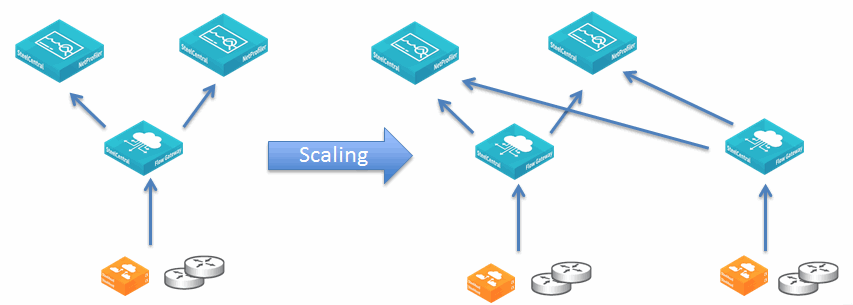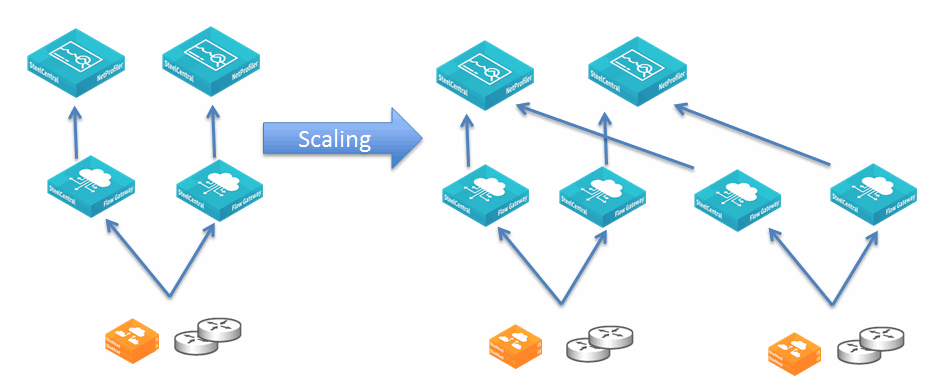Figure 2‑14 shows Option 1: all unique flows go to one Flow Gateway, and the Flow Gateway sends the flows to two NetProfilers.
Figure 2‑14. Option 1: Sending Flows to a Single Flow Gateway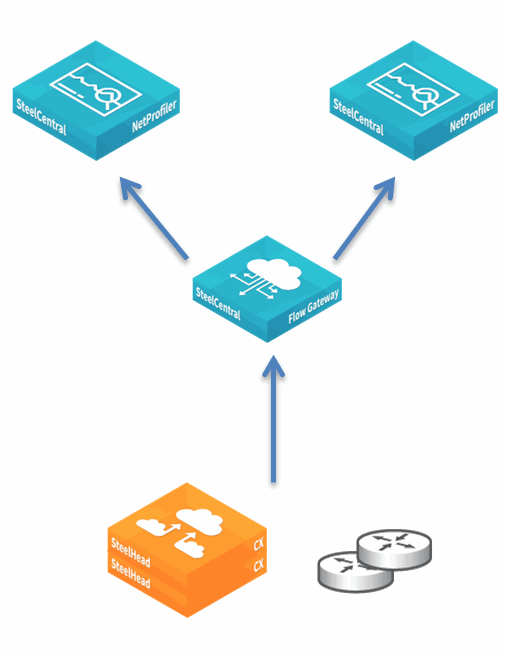

Figure 2‑15 shows how you can scale Option 1 to the size of your organization. You can use this design if you run out of flow volume and have multiple Flow Gateways. Keep in mind that each flow source can send to only a single Flow Gateway. If the Flow Gateway goes offline, you lose the flows for that Flow Gateway for the period of time it is not operational.
Figure 2‑16 shows Option 2: all flows go to two Flow Gateways. Each Flow Gateway sends its flows to only one NetProfiler. This design provides Flow Gateway redundancy as well as NetProfiler redundancy.
Figure 2‑16. Option 2: Sending Flows to Two Flow Gateways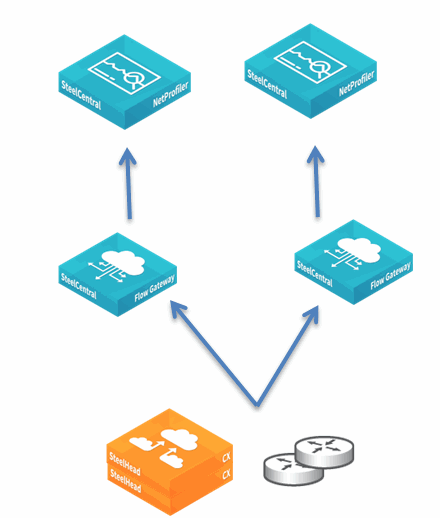

Figure 2‑17 shows how you can scale Option 2 to the size of your organization. You can scale this design as long as each Flow Gateway sends to only one NetProfiler.
Figure 2‑18 shows Option 3: flow sources that go to only one Flow Gateway are sent to two NetProfilers, and the flows that go to both Flow Gateways are sent to a single NetProfiler. Riverbed recommends this option for cases that absolutely require this level of complexity. Flow Gateways must have a per-flow-source configuration, which means that you must specify the flow sources on the Flow Gateway for export.
Figure 2‑18. Option 3: Blending Options 1 and 2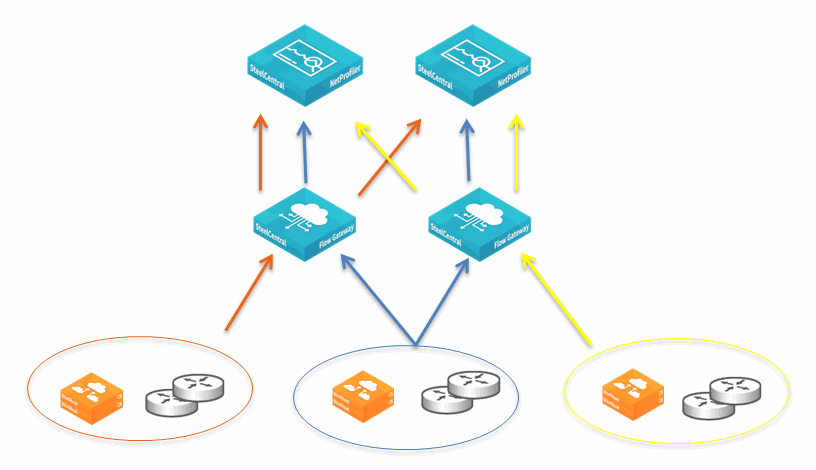

For more information about backup and restore, see the SteelCentral NetProfiler and NetExpress User’s Guide.
